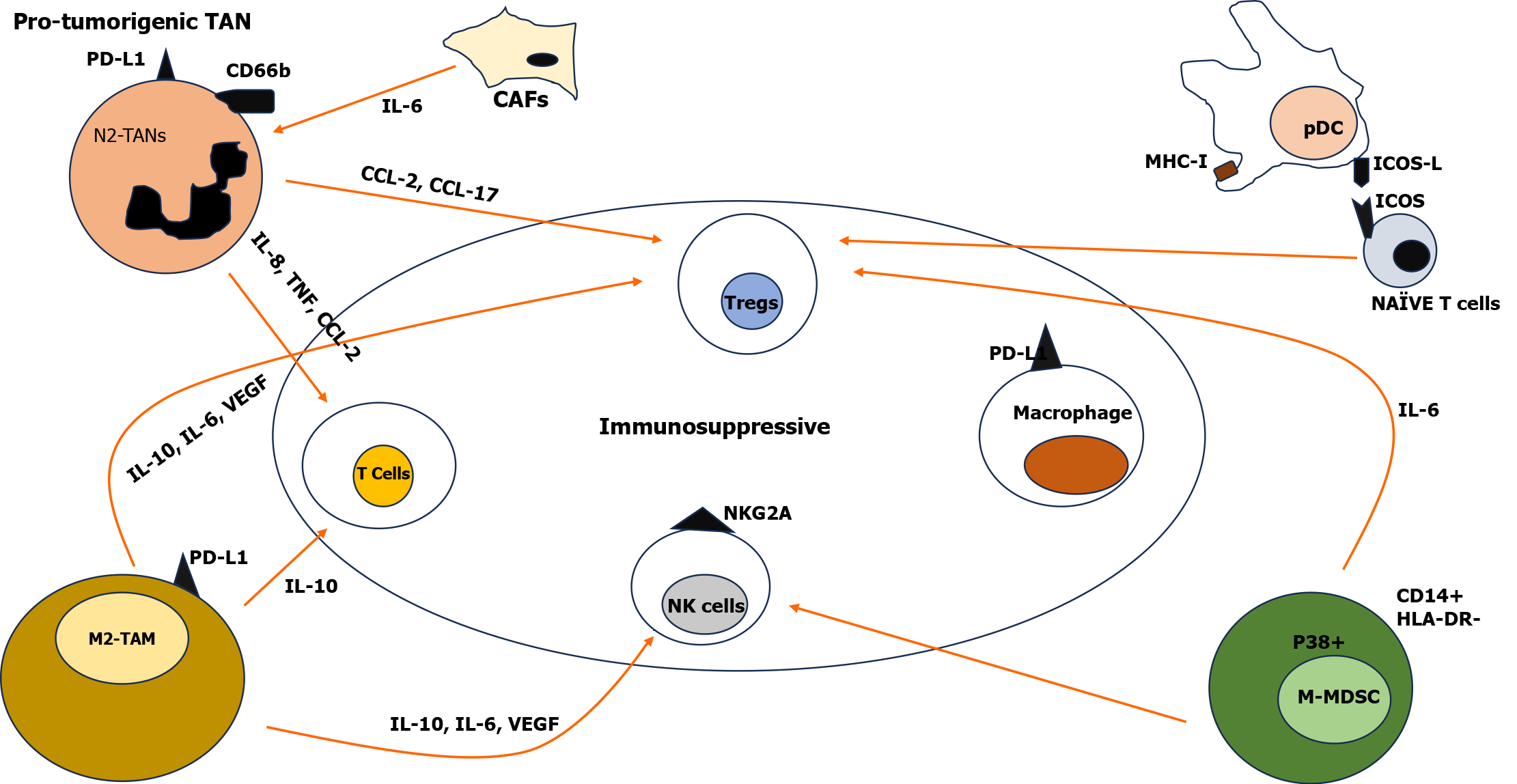Copyright
©The Author(s) 2024.
World J Hepatol. Mar 27, 2024; 16(3): 353-365
Published online Mar 27, 2024. doi: 10.4254/wjh.v16.i3.353
Published online Mar 27, 2024. doi: 10.4254/wjh.v16.i3.353
Figure 2 Immune suppression in the tumor microenvironment.
An immunosuppressive environment is brought about by the interaction of various immune cells in the tumor microenvironment (TME). N2 pro-tumorigenic tumor associated neutrophils (TANs) influence Tregs and T cells by various chemokines such as CCL-2, CCL-17 and interleukin (IL)-8, tumor necrosis factor, respectively. M2 tumor associated macrophages modulate the TME by influencing Tregs, natural killer (NK) cells and T lymphocytes through IL-6, vascular endothelial growth factor and IL-10, respectively. M type myeloid derived suppressor cells inhibit the NK cells and influence Tregs through IL-6. Cancer associated fibroblasts modulate the effect of N2 TANs via IL-6. Dendritic cells also play a role in the TME by regulating Tregs. CAFs: Cancer associated fibroblasts; PD-1: Programmed death receptor-1; PD-L1: programmed death receptor ligand-1; pDC: Dendritic cell; M-MDSC: Monocytic myeloid derived suppressor cells; NK cell: Natural killer cell; VEGF: Vascular endothelial growth factor; TAN: Tumor associated neutrophils; TAM: Tumor associated macrophages; Tregs: Regulatory T cells; IL: Interleukin.
- Citation: Gupta T, Jarpula NS. Hepatocellular carcinoma immune microenvironment and check point inhibitors-current status. World J Hepatol 2024; 16(3): 353-365
- URL: https://www.wjgnet.com/1948-5182/full/v16/i3/353.htm
- DOI: https://dx.doi.org/10.4254/wjh.v16.i3.353









